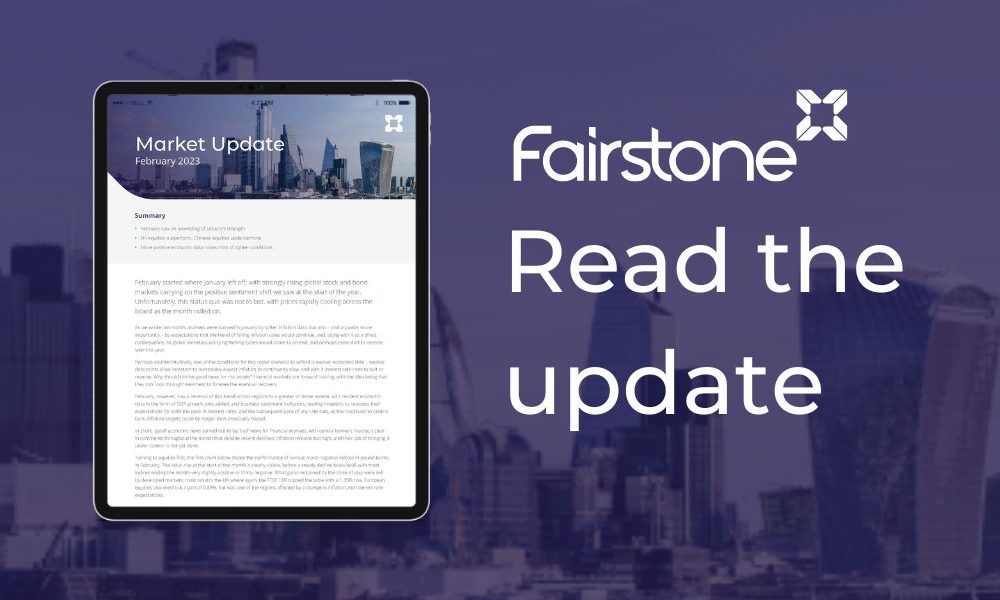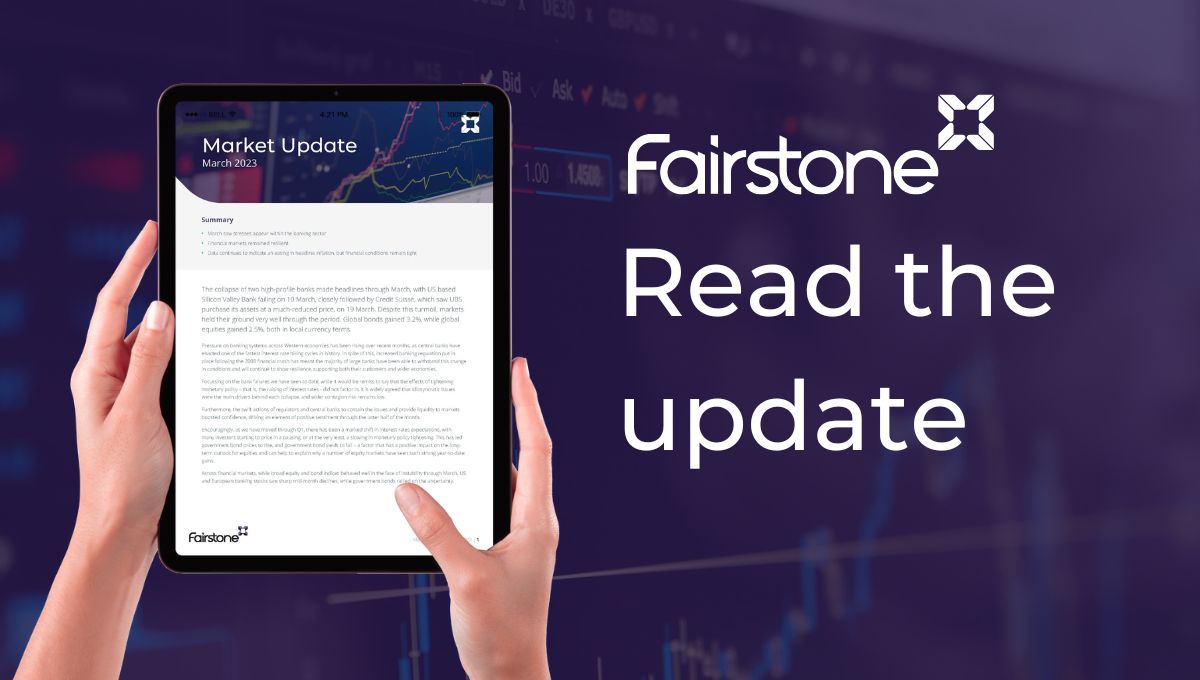
Market Updates

The collapse of two high-profile banks made headlines through March, with US based Silicon Valley Bank failing on 10 March, closely followed by Credit Suisse, which saw UBS purchase its assets at a much-reduced price, on 19 March. Despite this turmoil, markets held their ground very well through the period. Global bonds gained 3.2%, while global equities gained 2.5%, both in local currency terms.
Pressure on banking systems across Western economies has been rising over recent months, as central banks have enacted one of the fastest interest rate hiking cycles in history. In spite of this, increased banking regulation put in place following the 2008 financial crash has meant the majority of large banks have been able to withstand this change in conditions and will continue to show resilience, supporting both their customers and wider economies.
Focussing on the bank failures we have seen to date, while it would be remiss to say that the effects of tightening monetary policy – that is, the raising of interest rates – did not factor in, it is widely agreed that idiosyncratic issues were the main drivers behind each collapse, and wider contagion risk remains low.
Furthermore, the swift actions of regulators and central banks to contain the issues and provide liquidity to markets boosted confidence, driving an element of positive sentiment through the latter half of the month.
Encouragingly, as we have moved through Q1, there has been a marked shift in interest rates expectations, with many investors starting to price in a pausing, or at the very least, a slowing in monetary policy tightening. This has led government bond prices to rise, and government bond yields to fall – a factor that has a positive impact on the long-term outlook for equities and can help to explain why a number of equity markets have seen such strong year-to-date gains.
Across financial markets, while broad equity and bond indices behaved well in the face of instability through March, US and European banking stocks saw sharp mid-month declines, while government bonds rallied on the uncertainty.
Looking at the first chart below, showing a number of key global bond market indices, what is particularly evident is the clear upward shift in pricing that occurred between 9 March and 13 March, as markets sought shelter to digest the news of the first bank collapses.
A notable outlier to the trend is the line in yellow, the Global High Yield index, which saw prices fall through the same period. With high yield bonds representing the riskier end of the fixed income market, through periods of uncertainty, their returns often become more highly correlated with equities than safe haven bonds. If we turn our focus towards global equities, the similarity in performance of the two asset classes becomes clear.
Across equity markets, returns were mixed, although broadly positive – while volatility was surprisingly subdued, considering the wider picture. Looking at the chart below, showing performance through March of the major global equity indices, in pound terms, the period commenced fairly quietly. In stark contrast to last month, Chinese stocks began by pulling ahead of other regions, benefitting from attractive valuations and the growth opportunities that the country’s post-Covid reopening presents. A short, but broad, sell-off then ensued as markets digested the fallout from the banking failures. This was then followed by a steady tick up in returns across most regions.
The US technology index, the Nasdaq, fared particularly well, gaining 6.7% in dollar terms, and bringing to an end one of its best quarters in history. For the UK investor, the strength of the pound year-to-date means that when translated back to GBP, returns are slightly lower, at 4.5%.
In contrast the UK indices lagged, weighed down by a relatively high exposure to financials and energy stocks, the latter of which struggled in the face of falling oil prices.
Having started the month well, the MSCI China Index closed March up 2.4% in pound terms. Despite the tailwinds previously mentioned, the geopolitical backdrop still remains a challenge, with US and China tensions sitting at the forefront of investors’ minds.
While this will undoubtedly lead to heightened volatility as we progress through the year, data indicates that China has seen a strong rebound in growth since announcing its Covid reopening, and for now, inflation in the region remains very low. These factors will undoubtedly provide a level of solace to those looking to invest directly into China, as well as broader emerging markets and Asia.
Turning back to developed markets, economic data releases throughout Q1 have provided a number of encouraging signs. Growth has continued to show resilience, while headline inflation appears to be easing. However, core inflation – or, inflation excluding food and energy prices – remains stickier, forcing central banks to continue raising interest rates.
It is unclear how much further central bankers will push rates, given the events of the past month – but when it comes, an easing in monetary conditions will undoubtedly be well received by markets.
We have over 650 local advisers & staff specialising in investment advice all the way through to retirement planning. Provide some basic details through our quick and easy to use online tool, and we’ll provide you with the perfect match.
Alternatively, sign up to our newsletter to stay up to date with our latest news and expert insights.
| Match me to an adviser | Subscribe to receive updates |
The value of investments may fluctuate in price or value and you may get back less than the amount originally invested. Past performance is not a guide to the future. The views expressed in this publication represent those of the author and do not constitute financial advice.